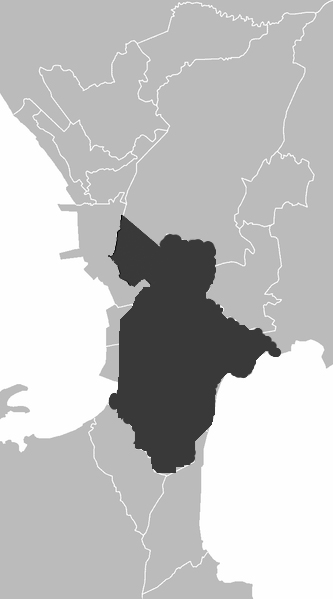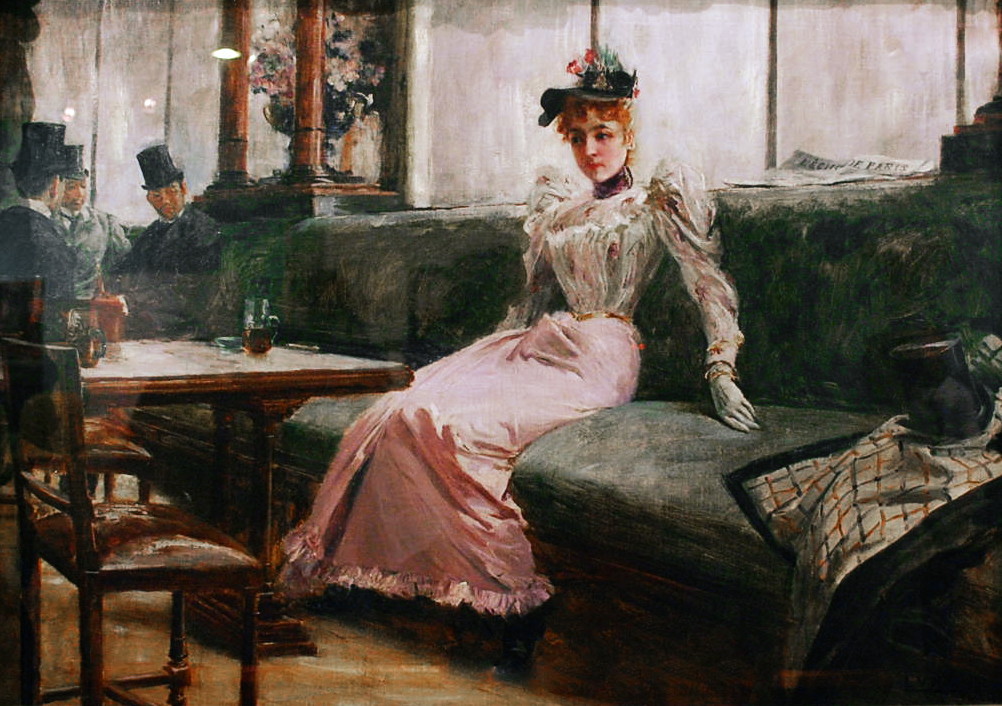|
GSIS Museo Ng Sining
The GSIS Museo ng Sining (English: GSIS Museum of Art) or the GSIS Museum is an art museum in Pasay, Metro Manila, Philippines established in April 1996. It is located at the GSIS Building within the Financial Center Area of Bay City. The museum features artworks of Filipino artists from the colonial period to contemporary period and also serves as an exhibit area for Filipino artists. In December 2011, a total of 308 artworks are in the museum's collection. Among its collections is a commissioned copy of ''Ritual Dance'' by Fernando Amorsolo-the original copy is lost in 1972, and the ''History of Philippine Music'' dated 1931. '' The Parisian Life'' by Juan Luna estimated in 2009 to value around P200 million, was formerly part of the museum's collections but was transferred to the National Museum of Fine Arts in 2012 along with other selected works. References {{Coord missing, Philippines Museums established in 1996 Art museums and galleries in the Philippines ... [...More Info...] [...Related Items...] OR: [Wikipedia] [Google] [Baidu] |
GSIS Building
The GSIS Building is the headquarters of the Government Service Insurance System (GSIS), the corporation that handles social security of the employees of the government of the Philippines. Located in Pasay, it is also the seat of the Senate. Old building The original headquarters of the GSIS was on Arroceros Street, Manila. Built in 1957, it was designed by Federico Ilustre. Gerald Lico said that it "adhered to a stylistic tendency that stood at the intersection between Neoclassical and modern aesthetics" in his book ''Arkitekturang Filipino''. In 2017, it was reported it much of the structure will be demolished, save for the facade. The Manila Hall of Justice will be built in its place. Two years earlier, it was proposed to be used as a homeless shelter. New building The new headquarters in Pasay was designed by Jorge Ramos. The Senate transferred to the GSIS Building in 1997, after sitting at the Old Congress Building in Manila. President Joseph Estrada, comparing the O ... [...More Info...] [...Related Items...] OR: [Wikipedia] [Google] [Baidu] |
Jose W
Jose is the English transliteration of the Hebrew and Aramaic name ''Yose'', which is etymologically linked to ''Yosef'' or Joseph. The name was popular during the Mishnaic and Talmudic periods. * Jose ben Abin *Jose ben Akabya * Jose the Galilean * Jose ben Halafta * Jose ben Jochanan * Jose ben Joezer of Zeredah * Jose ben Saul Given name Male * Jose (actor), Indian actor * Jose C. Abriol (1918–2003), Filipino priest * Jose Advincula (born 1952), Filipino Catholic Archbishop * Jose Agerre (1889–1962), Spanish writer * Jose Vasquez Aguilar (1900–1980), Filipino educator * Jose Rene Almendras (born 1960), Filipino businessman * Jose T. Almonte (born 1931), Filipino military personnel * Jose Roberto Antonio (born 1977), Filipino developer * Jose Aquino II (born 1956), Filipino politician * Jose Argumedo (born 1988), Mexican professional boxer * Jose Aristimuño, American political strategist * Jose Miguel Arroyo (born 1945), Philippine lawyer * Jose D. Aspir ... [...More Info...] [...Related Items...] OR: [Wikipedia] [Google] [Baidu] |
Bay City, Metro Manila
Bay City, also known as the Manila Bay Freeport Zone and Manila Bay Area, is the name for the reclamation area on Manila Bay located west of Roxas Boulevard and the Manila–Cavite Expressway in Metro Manila, the Philippines. The area is split between the cities of Manila and Pasay on the north side and Parañaque on the south. History The plan was to reclaim 3,000 hectares of land in Manila Bay. The project, formerly known as Boulevard 2000, was initiated by Imelda Marcos in 1977, with the creation of the Public Estate Authority (now Philippine Reclamation Authority) to manage the project. By the end of the Marcos rule in 1986, 660 hectares had been reclaimed, including the Cultural Center of the Philippines Complex. On January 25, 2017, President Rodrigo Duterte signed Executive Order No. 35 and was organized as Manila Bay Freeport Zone. Description Bay City is administratively divided between the villages of Barangay 719 of Malate, Manila and Barangay 76 of Pasay in the ... [...More Info...] [...Related Items...] OR: [Wikipedia] [Google] [Baidu] |
Pasay
Pasay, officially the City of Pasay ( fil, Lungsod ng Pasay; ), is a 1st class highly urbanized city in the National Capital Region of the Philippines. According to the 2020 census, it has a population of 440,656 people. Due to its location just south of Manila, Pasay quickly became an urban town during the American colonial period. History Early history In local folk history about the period before the arrival of Spanish colonizers, Pasay is said to have been part of Namayan (sometimes also called Sapa), a confederation of barangays which supposedly controlled territory stretching from Manila Bay to Laguna de Bay, and which, upon the arrival of the Spanish, eventually became known as Santa Ana de Sapa (modern day Santa Ana, Manila). According to these legends, the ruler of Namayan bequeathed his territories in what is now Culi-culi, Pasay, and Baclaran to one of his sons, named Pasay, explaining the origin of the name. In another version of the legend, it was Ra ... [...More Info...] [...Related Items...] OR: [Wikipedia] [Google] [Baidu] |
Metro Manila
Metropolitan Manila (often shortened as Metro Manila; fil, Kalakhang Maynila), officially the National Capital Region (NCR; fil, link=no, Pambansang Punong Rehiyon), is the capital region, seat of government and one of three List of metropolitan areas in the Philippines, defined metropolitan areas in the Philippines. It is composed of 16 Cities of the Philippines#Legal classification, highly urbanized cities: the Manila, city of Manila, Quezon City, Caloocan, Las Piñas, Makati, Malabon, Mandaluyong, Marikina, Muntinlupa, Navotas, Parañaque, Pasay, Pasig, San Juan, Metro Manila, San Juan, Taguig, and Valenzuela, Metro Manila, Valenzuela, as well as the municipality of Pateros. The region encompasses an area of and a population of as of 2020. It is the second most populous and the most densely populated Regions of the Philippines, region of the Philippines. It is also the List of metropolitan areas in Asia, 9th most populous metropolitan area in Asia and the List of larges ... [...More Info...] [...Related Items...] OR: [Wikipedia] [Google] [Baidu] |
Philippines
The Philippines (; fil, Pilipinas, links=no), officially the Republic of the Philippines ( fil, Republika ng Pilipinas, links=no), * bik, Republika kan Filipinas * ceb, Republika sa Pilipinas * cbk, República de Filipinas * hil, Republika sang Filipinas * ibg, Republika nat Filipinas * ilo, Republika ti Filipinas * ivv, Republika nu Filipinas * pam, Republika ning Filipinas * krj, Republika kang Pilipinas * mdh, Republika nu Pilipinas * mrw, Republika a Pilipinas * pag, Republika na Filipinas * xsb, Republika nin Pilipinas * sgd, Republika nan Pilipinas * tgl, Republika ng Pilipinas * tsg, Republika sin Pilipinas * war, Republika han Pilipinas * yka, Republika si Pilipinas In the recognized optional languages of the Philippines: * es, República de las Filipinas * ar, جمهورية الفلبين, Jumhūriyyat al-Filibbīn is an archipelagic state, archipelagic country in Southeast Asia. It is situated in the western Pacific Ocean and consists of aro ... [...More Info...] [...Related Items...] OR: [Wikipedia] [Google] [Baidu] |
Art Museum
An art museum or art gallery is a building or space for the display of art, usually from the museum's own Collection (artwork), collection. It might be in public or private ownership and may be accessible to all or have restrictions in place. Although primarily concerned with Visual arts, visual art, art museums are often used as a venue for other cultural exchanges and artistic activities, such as lectures, performance arts, music concerts, or poetry readings. Art museums also frequently host themed temporary exhibitions, which often include items on loan from other collections. Terminology An institution dedicated to the display of art can be called an art museum or an art gallery, and the two terms may be used interchangeably. This is reflected in the names of institutions around the world, some of which are called galleries (e.g. the National Gallery and Neue Nationalgalerie), and some of which are called museums (including the Metropolitan Museum of Art, the Museum of M ... [...More Info...] [...Related Items...] OR: [Wikipedia] [Google] [Baidu] |
Spanish Colonial Era (Philippines)
Spanish might refer to: * Items from or related to Spain: ** Spaniards are a nation and ethnic group indigenous to Spain **Spanish language, spoken in Spain and many Latin American countries **Spanish cuisine Other places * Spanish, Ontario, Canada * Spanish River (other), the name of several rivers * Spanish Town, Jamaica Other uses * John J. Spanish (1922–2019), American politician * "Spanish" (song), a single by Craig David, 2003 See also * * * Español (other) * Spain (other) * España (other) * Espanola (other) * Hispania, the Roman and Greek name for the Iberian Peninsula * Hispanic, the people, nations, and cultures that have a historical link to Spain * Hispanic (other) * Hispanism * Spain (other) * National and regional identity in Spain Both the perceived nationhood of Spain, and the perceived distinctions between different parts of its territory derive from historical, geographical, linguis ... [...More Info...] [...Related Items...] OR: [Wikipedia] [Google] [Baidu] |
Fernando Amorsolo
Fernando Cueto Amorsolo (born Fernando Amorsolo y Cueto; May 30, 1892 – April 24, 1972) was a portraitist and painter of rural Philippine landscapes. Nicknamed the "Grand Old Man of Philippine Art," he was the first-ever to be recognized as a National Artist of the Philippines. He was recognized as such for his "pioneering use of impressionistic technique" as well as his skill in the use of lighting and backlighting in his paintings, "significant not only in the development of Philippine art but also in the formation of Filipino notions of self and identity." Early life and education Fernando Amorsolo was born on May 30, 1892, in Metro, Manila. His parents were Pedro Amorsolo and Bonifacia Cueto. His father quickly found work in Daet, Camarines Norte months after Fernando's birth, and the family lived there until his father died when Amorsolo was 11. While he studied in a public school in Daet, his parents taught him to read and write Spanish at home. After his father's death ... [...More Info...] [...Related Items...] OR: [Wikipedia] [Google] [Baidu] |
The Parisian Life (painting)
''The Parisian Life'', also known as ''Interior d'un Cafi'' (also spelled ''Interior d’Un Café'', literally meaning "Inside a Café"), is an oil on canvas impressionist painting made by Filipino painter and revolutionary activist Juan Luna in 1892. The painting presently owned by the Government Service Insurance System is currently exhibited at the National Museum of Fine Arts after the state pension fund transferred management of its collection to the National Museum in March 2012. Measuring 57 cm × 79 cm (22 in × 31 in),“Parisian Life” by Juan Luna , christies.com ''The Parisian Life'' is one of the masterpieces that Luna created when he stayed in Paris, [...More Info...] [...Related Items...] OR: [Wikipedia] [Google] [Baidu] |
Juan Luna
Juan Luna de San Pedro y Novicio Ancheta (, ; October 23, 1857 – December 7, 1899) was a Filipino painter, sculptor and a political activist of the Philippine Revolution during the late 19th century. He became one of the first recognized Philippine artists. His winning the gold medal in the 1884 Madrid Exposition of Fine Arts, along with the silver win of fellow Filipino painter Félix Resurrección Hidalgo, prompted a celebration which was a major highlight in the memoirs of members of the Propaganda Movement, with the fellow '' Ilustrados'' toasting to the two painters' good health and to the brotherhood between Spain and the Philippines. Regarded for work done in the manner of European academies of his time, Luna painted literary and historical scenes, some with an underscore of political commentary. His allegorical works were inspired with classical balance, and often showed figures in theatrical poses. Biography Early life Born in the town of Badoc, Ilocos ... [...More Info...] [...Related Items...] OR: [Wikipedia] [Google] [Baidu] |
.jpg)




